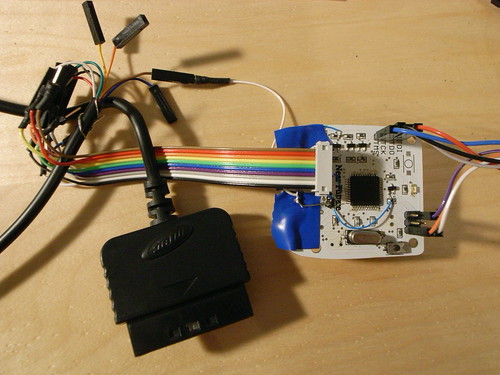I’m getting closer to have a second prototype of the PSX project. Strangely, I seem to be building the breadboard prototype (lower image) simultaneous with the PCB prototype (the thing on top). I think the breadboard prototype is mostly for working on the firmware for the Propeller, which is going better than I had hoped, especially seeing as I’ve never developed for it, and that I’m mostly in Spin assembly (not so ugly, but still..bleech..) The breadboard version is basically a core Propeller with some wiring for programming and for chatting to an EEPROM for permanent firmware storage. I started playing with this PCA9306 bidirectional level-shifter, which is sitting on the right half breadboard. This is basically the same circuit as what goes on the surface mount PCB, except for the addition of a LP2985 3.3v regulator.
This is a curious approach, getting slightly ahead of things, but it’s been a circuitous, round-about project from the original “hey..wouldn’t it be cool if..?” motivation that I thought would maybe be a weekend’s work of getting an Atmega324 to emulate a PSX controller. That’s the one in the image above, from last fall. I began the design last summer thinking I’d be done in short order. It should be..I’ve just got grease in my head or something. I was anticipating perhaps some trickiness because I took the trouble to pull out the boundary scan signals to the edge of the board so I could do some JTAG debugging. What went wrong? Well, mostly timing related things. This project motivated me to get my own logic analyzer so I could figure out what the heck was going wrong. There were mostly timing-related problems that I sort of pushed to the side to pursue another possible solution, which led to this current (v07) design.
How did this all start? I thought it’d be an interesting little bit of game controller provocation to have a controller that “got tired” just as one’s avatar might in a video game. To do this, I figured I’d have to Continue reading Refining



